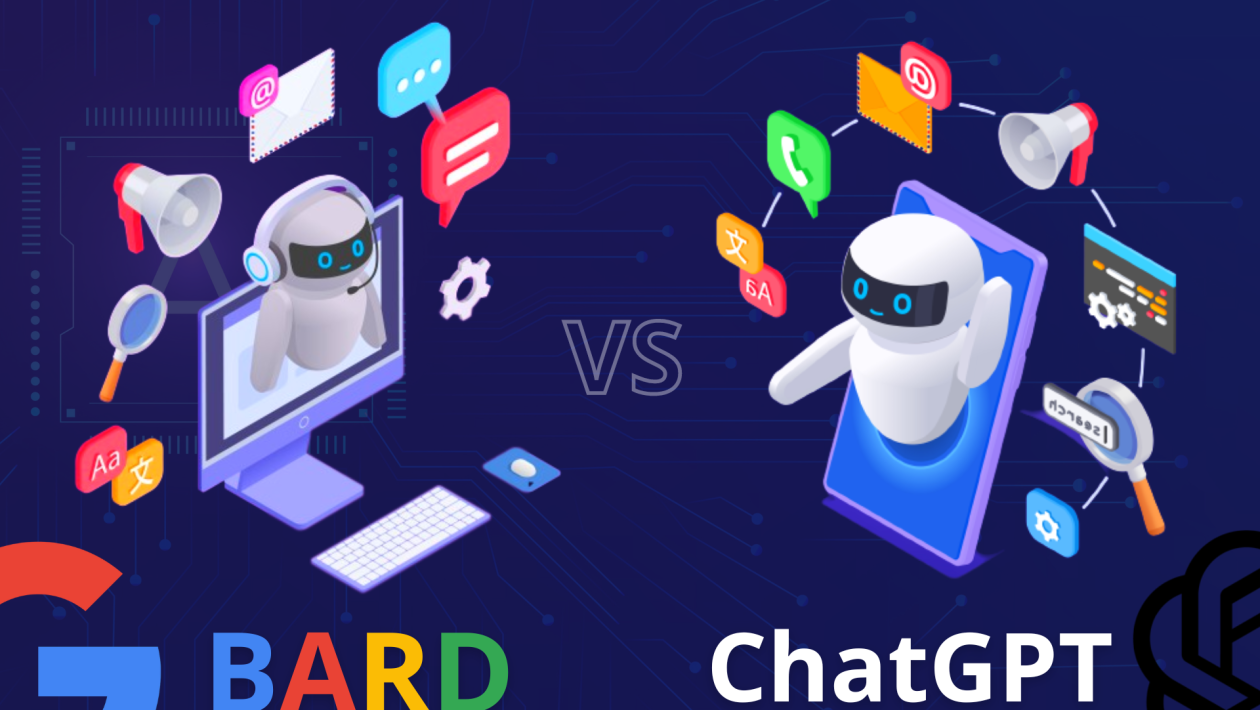In the fast-paced world of artificial intelligence (AI), two chatbots have risen to prominence for their ability to generate responses to prompts with astonishing human-like flair. ChatGPT, developed by OpenAI, and Google Bard have revolutionized content production and various business processes. This article delves into the intricacies of each tool, examining its features, strengths, and weaknesses to help you determine the ideal fit for your business.
ChatGPT: The AI Wordsmith
ChatGPT is the brainchild of OpenAI, an AI chatbot proficient in generating natural-sounding responses based on textual input. Powered by a vast language model, ChatGPT has been meticulously trained on a massive corpus of internet text.
Google Bard: The AI Conversation Virtuoso
On the other side of the AI spectrum, Google Bard emerges as a formidable competitor. Like ChatGPT, Google Bard possesses the prowess to answer questions and generate text through its advanced AI capabilities.
Pricing Showdown: ChatGPT vs. Google Bard
ChatGPT offers a basic version free of charge, granting users the freedom to ask up to 100 questions daily. For a mere $20 per month, ChatGPT Plus subscribers enjoy quicker response times, access to new features, and the enticing inclusion of GPT-4 (the free version relies on GPT-3.5). Those without an OpenAI contract can also join a waitlist for access to the ChatGPT API.
On the other hand, Google Bard remains entirely free, allowing users an unlimited number of questions. Google’s business model, primarily reliant on advertising, has sustained the provision of free products.
Feature Comparison: The Text Generation Contest
Both ChatGPT and Google Bard exhibit remarkable proficiency in producing text, ranging from information summaries to poetry and essays. ChatGPT’s training on internet text and Google Bard’s specific dataset for conversations fuel their unique strengths.
Advocates argue that ChatGPT excels in generating paragraphs, summaries, and text-based processing tasks, while Google Bard shines in conversational contexts.
Nevertheless, an intriguing contrast arises in the timeliness of their responses.
ChatGPT’s training data is mostly collected until 2021, limiting its access to current internet materials. Consequently, Google Bard triumphs in producing up-to-date responses, leveraging its instant access to the internet’s dynamic library. For instance, inquiring about recent events in Budapest, ChatGPT falters while Google Bard delivers a comprehensive list of yesterday’s news.
Context: The Charming Trait of Both ChatGPT and Google Bard
Drawing on previous conversations and user interactions, ChatGPT captivates users with its context awareness. Google Bard equally leverages contextual information, allowing it to pick up where a user left off seamlessly.
ChatGPT: Unveiling the Pros and Cons
Pros of ChatGPT
Cons of ChatGPT
Google Bard: Illuminating the Pros and Cons
Pros of Google Bard
Cons of Google Bard
Cautions When Using AI Chatbots
Despite the exceptional capabilities of ChatGPT and Google Bard, they remain in development and may exhibit errors or biases. Caution is advised while interpreting their responses to ensure accuracy. Additionally, concerns regarding privacy arise, as these chatbots collect personal information similar to search engines, including IP addresses, text, and even links to phone numbers, email addresses, and social media profiles.
Choosing Your AI Chatbot Ally: ChatGPT or Google Bard?
With both AI chatbots being available for free (unless opting for ChatGPT Plus), their responses often mirror each other due to their shared foundation of large natural language models. Google Bard, however, offers distinctive features, such as “draft” versions of responses and immediate access to up-to-date information from the internet. In contrast, ChatGPT lags with data only up to September 2021.
It is essential to acknowledge that both chatbots can be susceptible to errors and biases, warranting critical evaluation of their responses. Furthermore, the collection of personal data raises ethical concerns and potential misuse by malicious actors. Gaining a comprehensive understanding of generative AI, its advantages, and its risks is crucial in employing these chatbots responsibly.
Conclusion
In the AI chatbot arena, the battle between ChatGPT and Google Bard rages on. Each exhibits remarkable strengths and unique features, catering to various business needs. As these technologies advance, we must exercise caution in embracing their capabilities, cognizant of the potential biases and privacy implications. Ultimately, the choice between ChatGPT and Google Bard lies in aligning their strengths with your business requirements, leveraging the power of AI responsibly to unlock new frontiers in content production and beyond.
FAQs
FAQ 1: Can a Bard replace ChatGPT in AI applications?
No, Bards and ChatGPT serve different purposes. While Bards offer creativity and emotional engagement, ChatGPT excels at language-based tasks and AI-driven applications.
FAQ 2: Is ChatGPT capable of learning from conversations?
Yes, ChatGPT learns from the vast amounts of text data it analyzes, including conversations, to improve its language generation capabilities.
FAQ 3: Do Bards use AI to enhance their performances?
Some Bards may use technology and AI-driven tools to complement their performances,
but the core of their art lies in their personal creativity and expression.
FAQ 4: Can ChatGPT completely replace human customer support agents?
ChatGPT can handle some customer support queries, but it may not fully replace human agents, especially for complex and emotionally sensitive interactions.
FAQ 5: How can Bards and ChatGPT coexist in modern society?
Bards and ChatGPT can coexist harmoniously, with Bards adding a human touch to artistic performances, while ChatGPT serves as a valuable tool in various applications.
FAQ 6: What measures are in place to address ChatGPT’s bias issues?
Researchers and developers continually work on refining ChatGPT’s algorithms to reduce biases and ensure fair and ethical AI applications.
